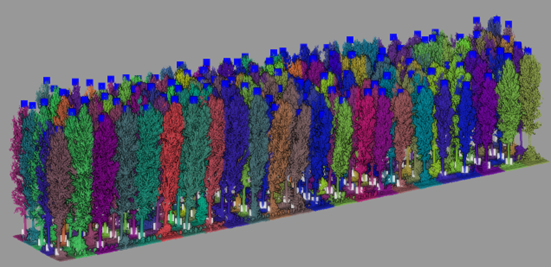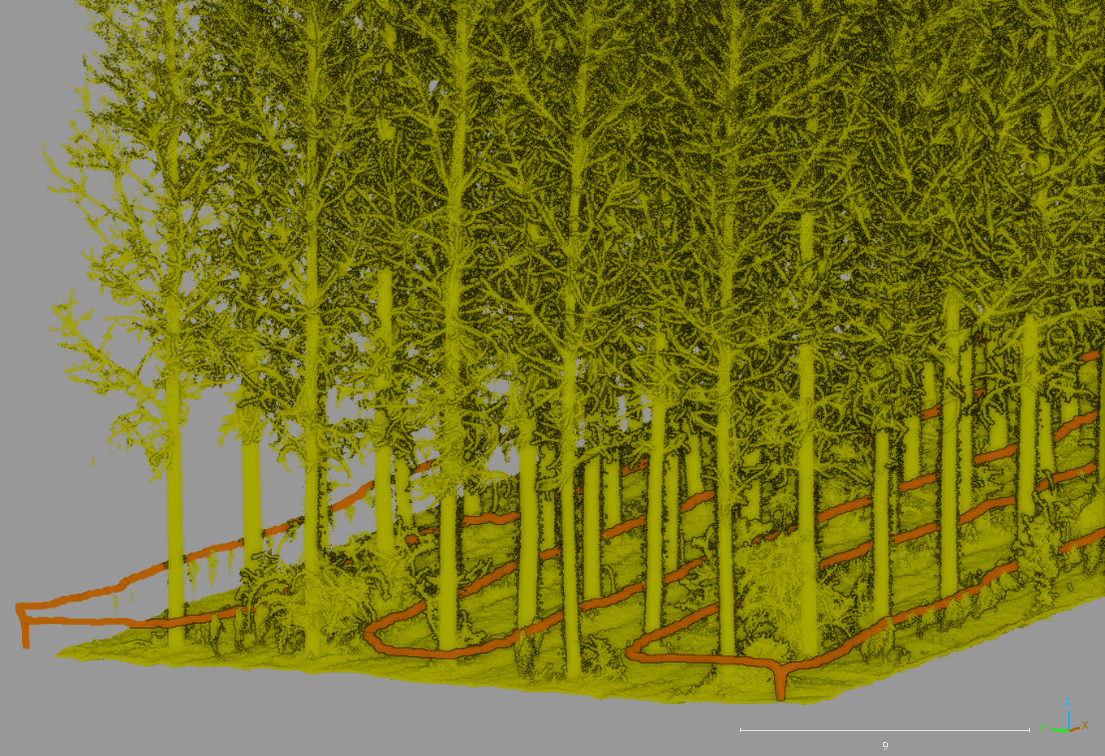Our collaboration with the School of Agricultural and Forestry Engineering at the University of León has resulted in significant advances in the use of artificial intelligence and the development of digital poplar management tools.
Garnica is at the cutting edge of sustainable forest management thanks to our collaboration with DRACONES at the University of León. We paired up with the research group, whose members comprise geomatics and forestry engineers, to take significant steps forward in applying geoinformatics to the acquisition, modeling, and analysis of key variables in the poplar value chain. Examples of this include monitoring the health of the poplar trees and estimating standing volume.
Our overarching goal is to generate models that support the decision-making process with regards to managing the forest and natural resources. At Garnica, we believe that if we are to improve efficiency and traceability, digitization is critical. This belief has always underpinned our decision to implement digital solutions.
Part of the European project DIGIS3, the University of León’s DRACONES is putting together a proof of concept in collaboration with Garnica with the ultimate goal of making Populus3D available to the forestry industry. The tool digitizes a number of the industry’s production processes, in particular taking an inventory of the wood standing in commercial cloned poplar tree farms. The project falls under the category of Smart Forestry.
Populus3D uses 3D data obtained via a mobile laser scanner, which creates detailed digital representations of the trees. The collaboration seeks to define a method that is economically viable as well as faster and more comprehensive than what currently exists.

Digital representation of a poplar tree farm obtained via a handheld laser scanner. Each tree is identified.

Digital representation of the poplar tree farm with the route taken by the handheld laser scanner.
The first phase of the proof of concept is now complete. Looking forward to 2024, we will continue to validate it by analyzing poplar tree farms with different sets of characteristics. The Dean of the University of León plus the researchers in the DRACONES group visited Garnica’s Valencia de Don Juan factory to analyze the first results of the collaboration. These demonstrated the potential of the use of handheld or backpack laser scanners in estimating the volume of stock at the factory’s lumber yard.
In September 2023, DRACONES ran an advanced workshop for Garnica on 3D technologies that can quantify and estimate the volume of standing poplar wood. The workshop included theoretical and practical training as well as data collection on the field using remote sensing sensors, i.e. the mobile laser scanner. This training will continue in 2024 and 2025 to delve further into the use of the Internet of Things and artificial intelligence to monitor poplar tree farms.
Based at Ponferrada Campus at the University of León, the DRACONES group comprises researchers with over 15 years’ experience in a wide range of fields related to remote sensing, 3D reconstruction, forest inventory, the study of natural resources, sustainable land management, and cultural heritage documentation.
Since 2022, researchers from the School of Agricultural and Forestry Engineering at Ponferrada Campus have been working in partnership with Garnica on a number of projects to disseminate knowledge about the poplar value chain. These include the free poplar growth and production simulator Chopo4D as well as the apps AppPopuli and AppPopuli+. The apps not only send reports on damage to poplar trees, but they also identify the cause of said damage: artificial intelligence is at work here using photographs taken on a cell phone in the forest.
